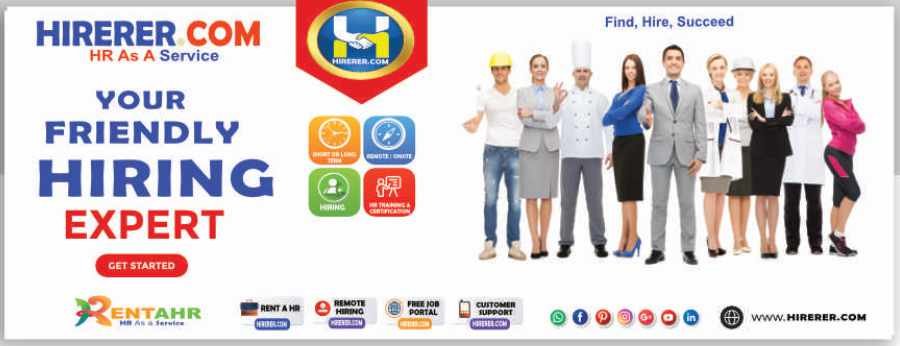
Workforce Planning in a Post-Pandemic World: Adapting Strategies for the New Normal
#FutureofWorkforce #PostPandemicWork #RemoteWorkforce #AgileWorkforce #WorkforceStrategy #HybridWork #Reskilling #EmployeeWellness #SustainableWorkforce #WorkplaceDiversity
The COVID-19 pandemic has reshaped the way businesses operate, compelling organizations to reevaluate their workforce strategies. As the world emerges from the crisis, workforce planning takes center stage, presenting an opportunity for businesses to recalibrate their approaches to adapt to the 'new normal'.
Hirerer.com -SMARTLY BUILT for Small & Medium Business
HR Dedicated Platform, FREE Job Portal, Freelancers Opportunities, HR Training & Certifications, Rent-A-HR for immediate needs
Adapting to Remote Work Dynamics
One of the significant shifts in the post-pandemic world is the adoption of remote work. Workforce planning now includes optimizing hybrid work models, fostering virtual collaboration, and enhancing digital infrastructure to support remote teams.
Flexible Work Arrangements
The pandemic underscored the importance of flexibility. Workforce planning must consider flexible work hours, compressed workweeks, and other non-traditional arrangements to accommodate diverse employee needs and balance work-life integration.
Embracing Digital Transformation
Post-pandemic workforce planning heavily revolves around digital transformation. HR departments are investing in technologies that facilitate remote recruitment, onboarding, and performance management. The use of AI and automation in workforce planning is becoming increasingly prevalent.
Reskilling and Upskilling Initiatives
The disruption caused by the pandemic necessitates a focus on reskilling and upskilling initiatives. Workforce planning strategies now prioritize continuous learning, offering employees opportunities to adapt to evolving job requirements.
Emphasis on Employee Well-being
The post-pandemic workforce planning considers employee mental health and well-being as a priority. Employers are incorporating wellness programs, mental health resources, and initiatives to combat burnout in their workforce strategies.
Agility in Organizational Structures
Organizational agility has become vital in workforce planning. Companies are restructuring teams, roles, and hierarchies to adapt to rapid changes, fostering a culture of adaptability and resilience.
Inclusive Workforce Strategies
Diversity and inclusion are integral in post-pandemic workforce planning. Strategies aim to create inclusive workplaces, ensuring equal opportunities for all employees.
Environmental Sustainability Initiatives
Workforce planning now includes environmental sustainability considerations, promoting eco-friendly practices and remote work to reduce the company's carbon footprint.
THE CONCLUSION
Workforce planning in the post-pandemic world has become multifaceted, emphasizing adaptability, flexibility, digital innovation, employee well-being, and sustainability. Adapting to these changes is crucial for organizations to thrive in the 'new normal' and create resilient, future-ready workforces.
Stay tuned for our next blog as we delve into the impact of HR tech on employee engagement.
What are your thoughts on workforce planning in a post-pandemic world? Share your insights and experiences in the comments below.
Follow Us on Linkedin, https://www.linkedin.com/company/smartlyhiring:
Share & Like, Spread the Word
Note. Unauthorized use and/or duplication of this material without express and written permission from this website author and/or owner is strictly prohibited. Excerpts and links may be used, provided that full and clear credit is given to Hirerer.com with appropriate and specific direction to the original content
2022 - 2024 All rights reserved by Hirerer.com


